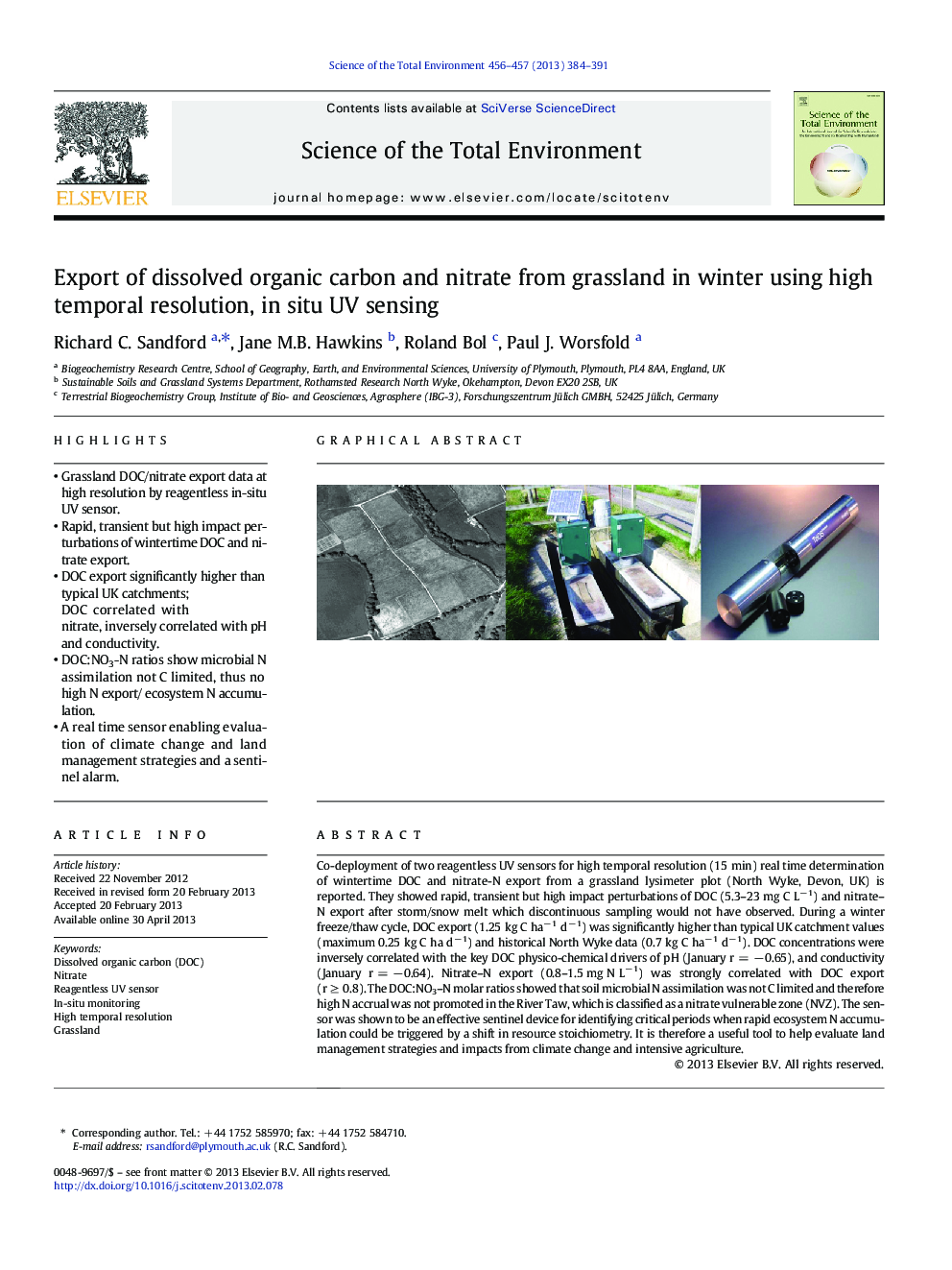| کد مقاله | کد نشریه | سال انتشار | مقاله انگلیسی | نسخه تمام متن |
|---|---|---|---|---|
| 4428828 | 1619801 | 2013 | 8 صفحه PDF | دانلود رایگان |

• Grassland DOC/nitrate export data at high resolution by reagentless in-situ UV sensor.
• Rapid, transient but high impact perturbations of wintertime DOC and nitrate export.
• DOC export significantly higher than typical UK catchments; DOC correlated with nitrate, inversely correlated with pH and conductivity.
• DOC:NO3-N ratios show microbial N assimilation not C limited, thus no high N export/ ecosystem N accumulation.
• A real time sensor enabling evaluation of climate change and land management strategies and a sentinel alarm.
Co-deployment of two reagentless UV sensors for high temporal resolution (15 min) real time determination of wintertime DOC and nitrate-N export from a grassland lysimeter plot (North Wyke, Devon, UK) is reported. They showed rapid, transient but high impact perturbations of DOC (5.3–23 mg C L− 1) and nitrate–N export after storm/snow melt which discontinuous sampling would not have observed. During a winter freeze/thaw cycle, DOC export (1.25 kg C ha− 1 d− 1) was significantly higher than typical UK catchment values (maximum 0.25 kg C ha d− 1) and historical North Wyke data (0.7 kg C ha− 1 d− 1). DOC concentrations were inversely correlated with the key DOC physico-chemical drivers of pH (January r = − 0.65), and conductivity (January r = − 0.64). Nitrate–N export (0.8–1.5 mg N L− 1) was strongly correlated with DOC export (r ≥ 0.8). The DOC:NO3–N molar ratios showed that soil microbial N assimilation was not C limited and therefore high N accrual was not promoted in the River Taw, which is classified as a nitrate vulnerable zone (NVZ). The sensor was shown to be an effective sentinel device for identifying critical periods when rapid ecosystem N accumulation could be triggered by a shift in resource stoichiometry. It is therefore a useful tool to help evaluate land management strategies and impacts from climate change and intensive agriculture.
Figure optionsDownload as PowerPoint slide
Journal: Science of The Total Environment - Volumes 456–457, 1 July 2013, Pages 384–391